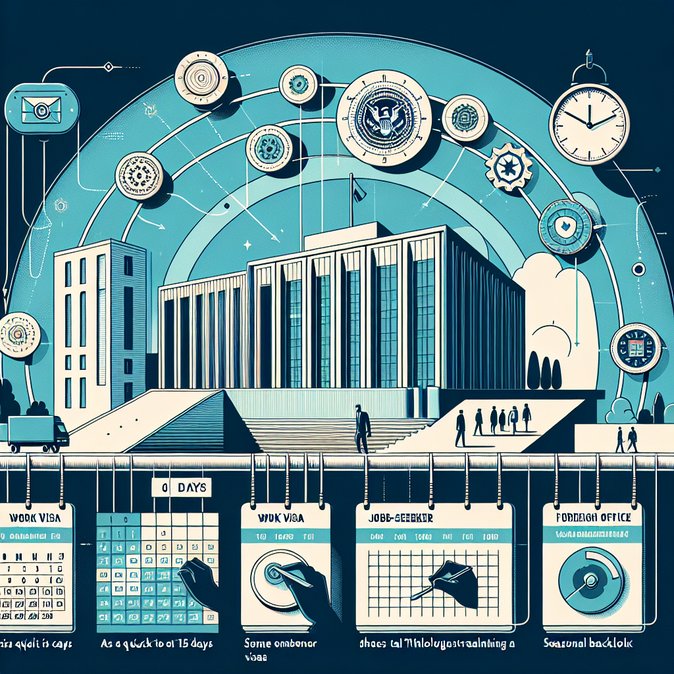
Relocation platform Jobbatical updated its benchmarking study on 13 November 2025, giving HR teams the freshest snapshot of German work-visa processing times.
According to Jobbatical’s client data and consular statistics, most Employment, EU Blue Card and IT-Specialist visas are now issued in six to twelve weeks—unchanged from spring but considerably faster than the 14- to 20-week averages seen in 2023. The report credits expanded staffing at German consulates, particularly in India and Brazil, and the roll-out of e-file transfers to local Foreigners’ Authorities (Ausländerbehörden).
![Germany’s work-visa clock: new data show 6–12 week processing norm, AI pilot promises faster decisions]()
The study highlights three emerging trends for 2025-26. First, job-seeker visas have stabilised at four to six weeks thanks to simplified background checks. Second, seasonal spikes remain: March-June and September-December still see queues lengthen by up to 30 percent. Third—and most interesting—Berlin has begun testing an AI-supported triage tool that flags low-risk applications for “auto-clearance” within 15 days. Early pilots in Bengaluru and Manila suggest a 40 percent time saving.
For global-mobility managers, the takeaway is twofold. Projects starting in Q2 or Q4 should factor in seasonal congestion, but trusted-employer status and complete digital files can shave weeks off. Meanwhile, HRIS integration with the Foreign Office’s new API (slated for March 2026) will allow companies to receive real-time case updates—potentially ending the ‘black-box’ phase between embassy submission and residence-permit approval.
Jobbatical predicts total German work-visa volumes will rise 10 percent this year, driven by IT and engineering hires from India, Türkiye and the Philippines. Employers that can pre-screen candidates for complete documentation and German-style contracts are best placed to exploit the faster lanes.
According to Jobbatical’s client data and consular statistics, most Employment, EU Blue Card and IT-Specialist visas are now issued in six to twelve weeks—unchanged from spring but considerably faster than the 14- to 20-week averages seen in 2023. The report credits expanded staffing at German consulates, particularly in India and Brazil, and the roll-out of e-file transfers to local Foreigners’ Authorities (Ausländerbehörden).

The study highlights three emerging trends for 2025-26. First, job-seeker visas have stabilised at four to six weeks thanks to simplified background checks. Second, seasonal spikes remain: March-June and September-December still see queues lengthen by up to 30 percent. Third—and most interesting—Berlin has begun testing an AI-supported triage tool that flags low-risk applications for “auto-clearance” within 15 days. Early pilots in Bengaluru and Manila suggest a 40 percent time saving.
For global-mobility managers, the takeaway is twofold. Projects starting in Q2 or Q4 should factor in seasonal congestion, but trusted-employer status and complete digital files can shave weeks off. Meanwhile, HRIS integration with the Foreign Office’s new API (slated for March 2026) will allow companies to receive real-time case updates—potentially ending the ‘black-box’ phase between embassy submission and residence-permit approval.
Jobbatical predicts total German work-visa volumes will rise 10 percent this year, driven by IT and engineering hires from India, Türkiye and the Philippines. Employers that can pre-screen candidates for complete documentation and German-style contracts are best placed to exploit the faster lanes.









